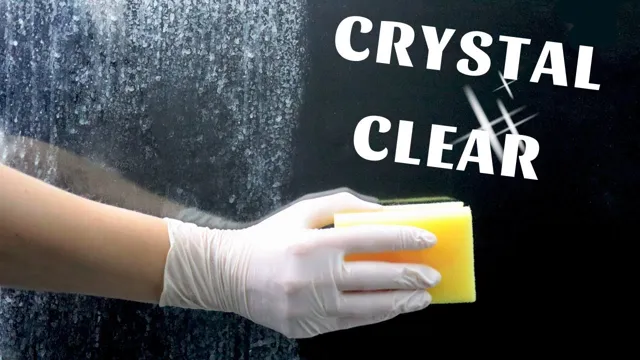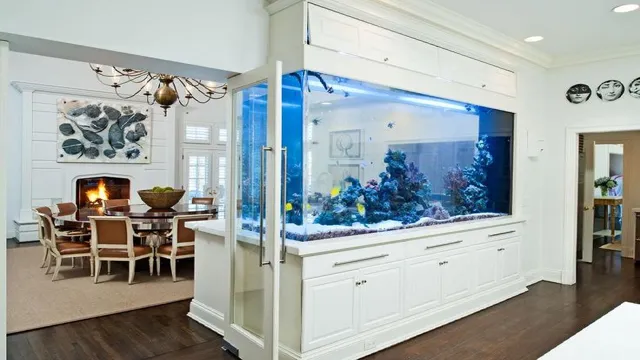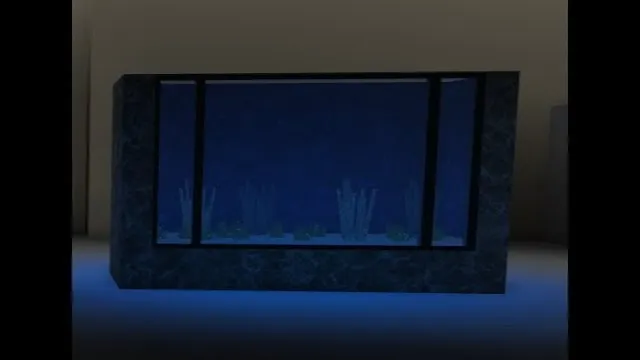Is Blue Light Good for Aquarium Plants? Discover the Benefits and Tips for Optimal Growth

As an aquarium owner, you likely want to keep your underwater paradise stunning and healthy. One aspect of plant care that is often overlooked is lighting, but the right type of light can be crucial for your aquatic plants to thrive. Blue light is one option that is growing in popularity, but is it actually beneficial for your plants? In this article, we will delve into the benefits and risks of using blue light in your aquarium and help you determine if it’s the right choice for your aquatic garden.
So, let’s dive in!
Understanding Blue Light in the Aquarium Environment
When it comes to aquariums, blue light might seem like an odd choice to use. After all, it’s mostly associated with night lighting. But did you know that blue light has been shown to help aquarium plants grow and thrive? Plants use a process called photosynthesis to turn light into energy they can use.
Blue light wavelengths are particularly efficient at driving this process, encouraging plants to produce nutrients and grow faster. So, is blue light good for aquarium plants? The short answer is yes! Incorporating blue light into your aquarium’s lighting system can help your plants thrive and ultimately create a healthier, more vibrant ecosystem for your fish.
What is Blue Light?
Blue Light Blue light is a type of light that is known to have a short wavelength, high energy, and is visible to the human eye. In an aquarium environment, blue light is often used to mimic natural light that fish and corals typically encounter in the wild. The blue light spectrum usually ranges from 400-490nm, and it is believed to have a positive impact on the growth, health, and behavior of aquatic organisms.
Blue light can also enhance the vibrant coloration of many corals and fish, making them appear more vivid and visually appealing. However, it is important to note that prolonged exposure to blue light can also be harmful to certain organisms, such as some types of algae, and can cause excessive growth or bleaching of corals. Therefore, it is crucial to understand how blue light works in the aquarium environment and use it in moderation to ensure the health and well-being of all aquatic inhabitants.

How Does Blue Light Affect Plants?
Blue light is an integral component in the aquarium environment as it plays a significant role in plant growth. It is a form of visible light with a wavelength range of 400-500nm, which triggers photosynthesis in plants. Blue light is necessary for chlorophyll synthesis, which is vital for the production of energy in plants.
The presence of blue light also influences plant flowering and fruiting. It has also been noted to have positive effects on the formation of lateral branches and leaf thickness. Blue light is, therefore, crucial in ensuring healthy plant growth in the aquarium environment.
While blue light is necessary for plant growth, excessive exposure can lead to negative effects such as photobleaching, stunted growth, and even plant death. Thus, it is essential to understand the optimal levels of blue light for plant growth in an aquarium setting.
The Benefits of Blue Light for Aquarium Plants
Aquarium plants require specific wavelengths of light for photosynthesis, and blue light happens to be one of the most essential colors. Blue light provides energy for plant growth, enhances photosynthesis, and encourages the production of chlorophyll. When aquarium plants receive optimal blue light, they thrive and remain healthy, improving the overall health and appearance of the aquarium.
Blue light also assists in the regulation of plant growth and development, preventing the onset of unwanted algae growth. However, it is crucial to note that too much blue light can also be harmful to aquarium plants. Therefore, it is recommended to use blue light in moderation and combine it with other colors of light to achieve an optimal spectrum for plant growth.
Overall, blue light is good for aquarium plants, and when used appropriately, it can provide numerous benefits to the plants and the aquarium’s ecosystem.
Promoting Chlorophyll Production and Photosynthesis
If you’re an aquarium enthusiast, you might already understand the importance of proper lighting for your aquatic plants. One particular light wave that has been proven to promote chlorophyll production and photosynthesis in plants is blue light. This type of light has shorter wavelengths, making it more energetic than other colors in the visible spectrum.
Blue light can penetrate deeper into the water, allowing it to reach even the bottom leaves of your plants. As a result, plants receive a higher intensity of light, which in turn boosts their growth and overall health. So, next time you consider the lighting setup for your aquarium, remember the benefits of incorporating blue light for your aquatic plants.
Boosting Growth and Development
Aquarium plants require light to grow and thrive, but not all light is created equal. Blue light, in particular, has been found to be highly beneficial for aquarium plants. This is because blue light has a shorter wavelength that is easily absorbed by chlorophyll, a pigment found in plant cells that is essential for photosynthesis.
As a result, blue light can help to increase plant growth and development, while also enhancing their coloration and overall aesthetic appeal. Additionally, blue light can also help to regulate plant behavior, such as the opening and closing of stomata, which can help to prevent water loss and improve plant health. By providing your aquarium plants with the right amount of blue light, you can help them to thrive and create a beautiful underwater environment for you and your fish to enjoy.
Enhancing Coloration and Appearance
Aquarium plants play a crucial role in enhancing the appearance of any aquatic environment. Besides adding beauty to the aquarium, they also provide oxygen and filtration for the fish. For their optimal growth and health, aquarium plants require various nutrients, including light.
Blue light is an essential component for the growth and development of aquarium plants as it helps to enhance their coloration and appearance. It is particularly important for plants that have a blueish hue, as they require this light to photosynthesize. Furthermore, blue light can also increase the rate of oxygen production and promote the plant’s overall growth.
Therefore, using blue light in an aquarium can lead to healthier and more vibrant plants, which ultimately helps to create a more beautiful aquatic environment.
The Risks of Using Blue Light in Your Aquarium
As much as blue light can add a beautiful aesthetic to your aquarium, it may not always be beneficial for your aquatic plants and animals. While it can stimulate plant growth, excessive exposure could actually harm your plant’s photosynthetic process. Plants require a balance between light and darkness, and the blue spectrum disrupts that balance.
This can lead to metabolic stress, stunted growth, and even cause leaves to turn yellow and fall off. Additionally, blue light can alter fish behavior, causing them to become disoriented and swim erratically. It’s important to find a balance that works for both your plants and animals.
So, is blue light good for aquarium plants? The answer is yes, in moderation. High-quality LED lights with adjustable settings can help create a balanced environment for your aquarium.
Overexposure and Burnout
Blue light is a popular choice among aquarium enthusiasts as it enhances the beauty of marine life by bringing out the striking colors in corals and other aquatic creatures. However, overexposure to blue light can be extremely harmful to marine life, particularly in delicate corals. The excessive light can cause the corals to become stressed, leading to their demise.
Furthermore, the blue light can also cause algae growth, the outbreak of diseases, and even fish burnout. It is important to remember that moderation is key when it comes to lighting your aquarium. You should always use blue light in conjunction with white and red lights to provide a natural and balanced lighting environment for your marine pets.
By doing so, you can protect your aquatic friends’ well-being and keep them healthy and happy for a long time.
Inhibition of Growth and Reproduction
If you have an aquarium, you may be tempted to add blue lighting to enhance the look of your aquatic world. But did you know that blue light can actually inhibit the growth and reproduction of your fish and plants? Blue light has been shown to disrupt the circadian rhythms of aquatic life, leading to decreased activity levels and food intake. This can cause stunted growth and a lower reproductive rate.
Additionally, blue light can cause stress to your aquarium inhabitants, leading to a weakened immune system and a higher susceptibility to disease. So before you add blue lighting to your aquarium, consider the risks it may pose to the health and well-being of your aquatic life. Instead, consider using natural lighting that mimics the sun’s spectrum or adding plants and hiding spaces to create a more natural and comfortable environment for your fish.
Your aquarium inhabitants will thank you for it!
How to Optimize Blue Light for Your Aquarium Plants
If you want to ensure optimal growth for your aquarium plants, then blue light can indeed be beneficial. However, the key is in understanding how to optimize it. Blue light has a shorter wavelength than other types of light, which makes it particularly effective for aiding in photosynthesis.
That being said, too much blue light can actually have negative effects on your plants. Therefore, it’s important to strike a balance. The general rule of thumb is that plants typically need around 12-14 hours of light per day, but only about 6 of those should be blue light.
Additionally, it’s a good idea to pair your blue light with other colors, as plants also need red and green light to properly grow. By finding the right balance of blue light and other wavelengths, you can help your aquarium plants to thrive and flourish.
Choosing the Right Spectrums and Intensity
When it comes to aquarium plants, it’s crucial to provide them with the optimal light spectrums and intensity they need to thrive. Blue light is one of the key spectrums that plays a vital role in the growth and development of your aquarium plants. However, not all blue light is created equal, and it’s important to understand how to optimize it for your plants’ needs.
The right spectrum of blue light can help stimulate photosynthesis, increase growth rates, and enhance coloration in your aquatic plants. But how do you know which intensity and spectrum is ideal for your plants? It’s recommended to use a combination of blue and red light spectrums for your aquarium plants. You can customize the intensity and ratio of blue and red light to your liking, depending on the specific requirements of your plants.
To get the best results, choose a light source that emits blue light within the range of 400-470 nm. This spectrum has been shown to be the most effective at promoting photosynthesis in plants. Additionally, make sure to keep the intensity of the blue light at moderate levels to avoid causing stress to your plants.
Too much or too little blue light can affect the growth and development of your aquarium plants. It’s also essential to keep the other factors in mind, such as the duration of light exposure and the size of your aquarium. In conclusion, optimizing blue light for your aquarium plants can make all the difference when it comes to their growth and development.
By selecting the right spectrum and intensity, you can help your plants thrive and create a vibrant, healthy aquascape. Remember, every plant has its specific needs, so it’s essential to do your research and adjust the lighting according to the individual requirements of your aquatic plants.
Creating a Healthy and Balanced Lighting Schedule
If you’re looking to create a healthy and balanced lighting schedule for your aquarium plants, optimizing blue light is essential. Blue light is a crucial component of the light spectrum that supports your plants’ growth and development. Getting the right balance of blue light can be a challenge, but it’s important to keep in mind the needs of your plants.
One way to achieve optimal blue light is by using LED lights that offer a range of colors and customizable settings. Another tip is to ensure that you have a consistent and regular lighting schedule to avoid any fluctuation in light intensity. Remember to monitor your plants’ growth and adjust your lighting schedule accordingly.
With a little attention and care, you can provide your aquarium plants with the blue light they need to thrive.
Conclusion: Is Blue Light Good for Aquarium Plants?
In conclusion, it seems that when it comes to aquarium plants, blue light may be a case of less is more. While it can certainly provide some benefits, too much blue light can actually harm your plants and encourage algae growth. So, like every good relationship, it’s all about finding the right balance.
Give your plants just enough blue light to help them thrive, without drowning out their other needs. After all, a little bit of blue can be a good thing, but sometimes it’s best to sit back and let nature do its thing.”
FAQs
What is blue light and how does it affect aquarium plants?
Blue light is a spectrum of light with a wavelength between 450-490nm. It is important for photosynthesis in aquarium plants as it is known to promote growth and development.
How much blue light should be used for aquarium plants?
It is recommended to use 1-2 watts of blue light per gallon of water in your aquarium. However, the exact amount may vary depending on the type of plants you have and their light requirements.
Can too much blue light harm aquarium plants?
Yes, too much blue light can harm aquarium plants by promoting the growth of algae and causing a lack of balance in the tank’s ecosystem. It is important to find the right balance of light for your plants.
Can blue light be used as the sole light source for aquarium plants?
No, blue light should not be used as the sole light source for aquarium plants. Other spectrums of light are also important for plant growth and development.
Are there any benefits of using blue light for aquarium plants?
Yes, there are several benefits of using blue light for aquarium plants such as promoting growth, enhancing color, and aiding in photosynthesis.
What types of aquarium plants require blue light?
Most aquarium plants require blue light for optimal growth and development. However, some plants may require more blue light than others and it is important to research the specific light requirements of your plants.
Can LED lights be used to provide blue light for aquarium plants?
Yes, LED lights are a popular choice for providing blue light for aquarium plants as they are energy-efficient and offer customizable spectrums of light. However, make sure to choose LED lights that are suitable for aquarium use.






